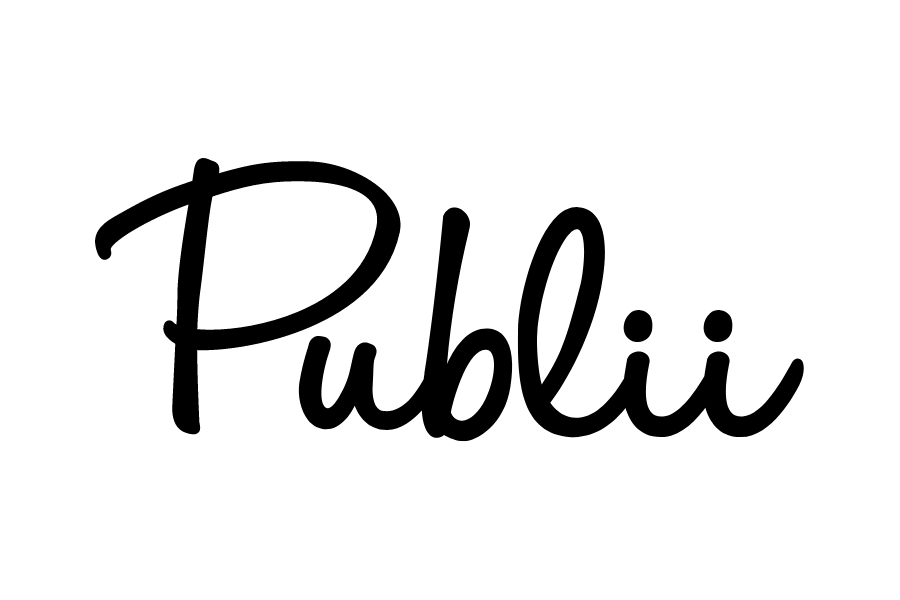- What’s the difference between dynamic and static websites?
- How do I create a static website with Publii?
- What is Publii good at?
- What are Publii’s limitations?
- How do I use Publii?
- How do I proceed from here?
- How do I publish my Publii static website?
- Visit Tiiny.host to post your website in three simple steps
- How do I get support for my Tiiny.host site?
Fast. Fast and secure. That’s what you want your website to be.
If you come from a website platform such as WordPress or Joomla, you appreciate the power of an easy-to-use editor for your blog posts. But you also work very hard to make your website fast and secure. You may even spend a significant amount of time and money to achieve speed and safety. Either that, or you are suffering in the SEO ratings war and exposing yourself to hackers and malware.
There is a way to use the convenience of a dynamic CMS (Content Management System) like WordPress or Joomla, yet have your website be fast and secure from the moment it is published. No extra charge. In fact, you may decrease your web hosting expenses.
How? I’ll walk you through this.
What’s the difference between dynamic and static websites?
First, let’s define what we’re talking about.
CMS platforms like WordPress and Joomla create dynamic websites. Simply put, dynamic websites wait until your visitor shows up to create the pages they see. This takes time. The server has to figure out what the visitor wants, then write the code that presents the page, then deliver the page to the visitor. This multi-step process slows down the website’s performance. This is the nature of dynamic sites and is an inherent liability.
Static websites, on the other hand, have all your web pages pre-written before the visitor even gets to your site. This reduces the strain and amount of work the web server must do. The time it takes to deliver a pre-made page to your visitor is minimal. Also, because the server isn’t really doing much work, it is not subject to hacking and malware.
A static site is fast and secure. That’s what we’re after.
How do I create a static website with Publii?
There are many ways to create static websites. The most fundamental way is to write the webpage yourself using HTML, CSS, and JavaScript.
But in this age of automation, writing web pages by hand is slow and error-prone. You want to take advantage of all the improvements computers have gone through over the past few decades, right? You want a modern interface that allows you to focus on the content, not the programming. Of course.
Publii is a static website generator that uses a WordPress/Joomla-style interface. Instead of having your platform dynamically generate pages, Publii creates your entire website in advance. You write your web pages or blog posts using a modern, easy interface. Then Publii goes to work.
Publii creates the HTML, CSS, and JavaScript required for your website. You simply connect to your web host, then upload the resulting files.
Boom! Your static website is published. At least, it is if you use a fast and secure web host such as Tiiny.host. We’ll discuss this later.
What is Publii good at?
Publii is best at creating small, simple websites. Websites that are primarily about the content and use straightforward formatting without relying on the server to do any work (beyond serving the pages) are best.
Publii has been around since 2016 and is still under active development. This is great news because it means that a lot of work has gone into it, and it has an active community supporting it.
The advantages of Publii include the following:
- Use Publii locally on your own computer—Windows, Mac, Linux
- Has an easy-to-use, minimal writing interface similar to classic WordPress
- Provides three different types of editors: WYSIWYG, block, and Markdown
- Free and paid themes for designing your website
- Lots of writing aids, such as formatting and useful statistics
- Built-in SEO features
- Integrations to popular static site hosts and services
- Global and local configurations
What are Publii’s limitations?
If you require interactive features, static sites are not your best option. Specific web standards, such as site search and form handling, are possible with static sites, but only in a limited fashion.
Still, anything that can be done using custom JavaScript programming is available based on your access to a JS programmer.
How do I use Publii?
The Publii app opens onto its primary dashboard:
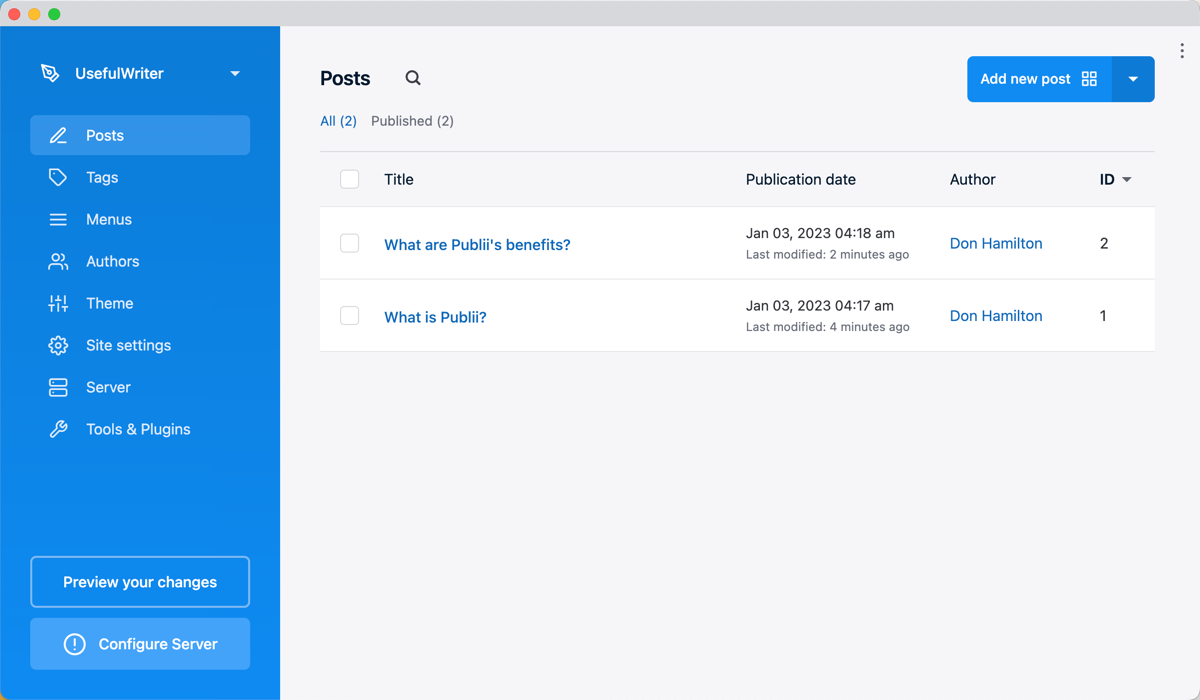
On the right side of the dashboard, you’ll find the posts you’ve already created, if any.
On the left side of the dashboard is a menu of editing options.
Publii assumes that you want to get to work quickly. The “Add new post” button on the top right of the dashboard offers your choice of three editors.
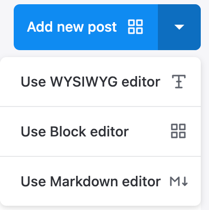
Here’s what these options mean:
WYSIWYG stands for “What you see is what you get.” This is the basic yet full-featured writing interface where you can visually create your post.
Block Editor is similar to WordPress’ block editor. Use the Tab key to see what block types are available. Block types in the standard app distribution include Header, Image, Gallery, List, Quote, Code, HTML, Separator, Readmore, and TOC (Table of Contents).
Markdown is the interface for adding your own markdown (.md) tags and formatting to your post.
How do I proceed from here?
I believe it’s important to plan your website carefully before using any web page editor. If you plan on writing your posts in Publii, make a list of the pages you need and work from that list. But anyone with web page or blog post experience knows this. The structure of your blog or website matters to SEO and to your visitors. Make sure your visitors can access your information easily. All it takes is a little planning.
How do I publish my Publii static website?
Tiiny.host is the simplest way to host and share your web project, Publii static site, PDF, or other files.
I’ll show you how to post to Tiiny.host with Publii:
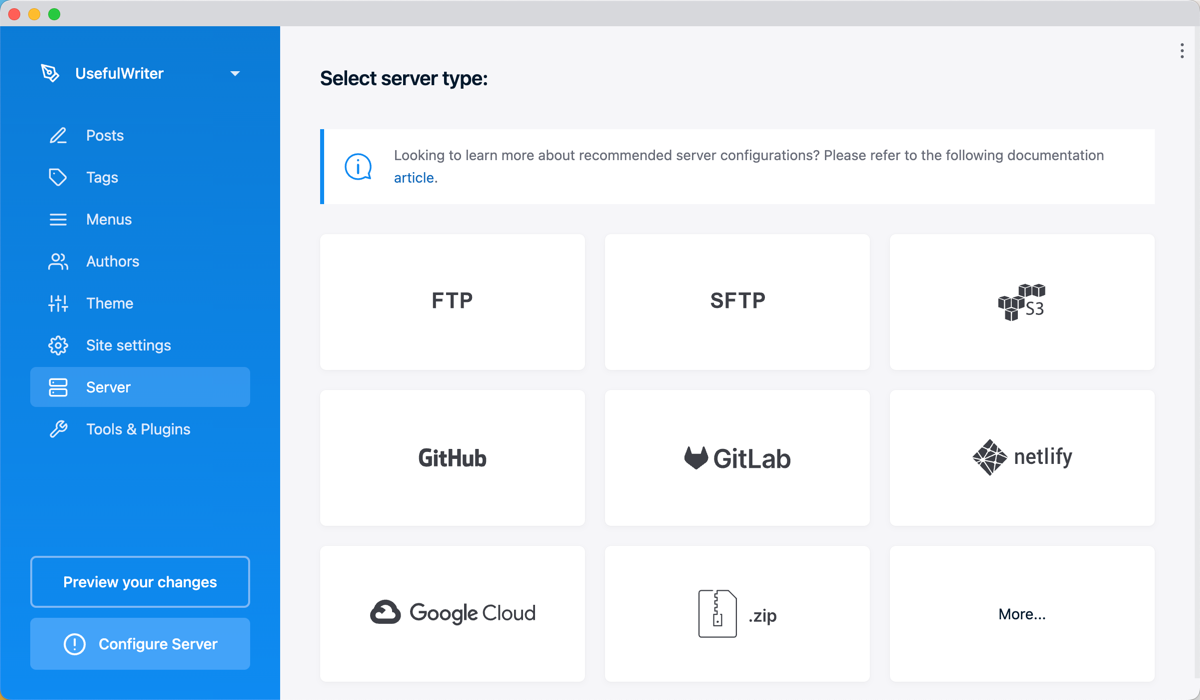
From the main dashboard, choose “Server” from the left menu.
Click on “.zip” in the bottom row (shown above). You’ll be presented with a new screen.
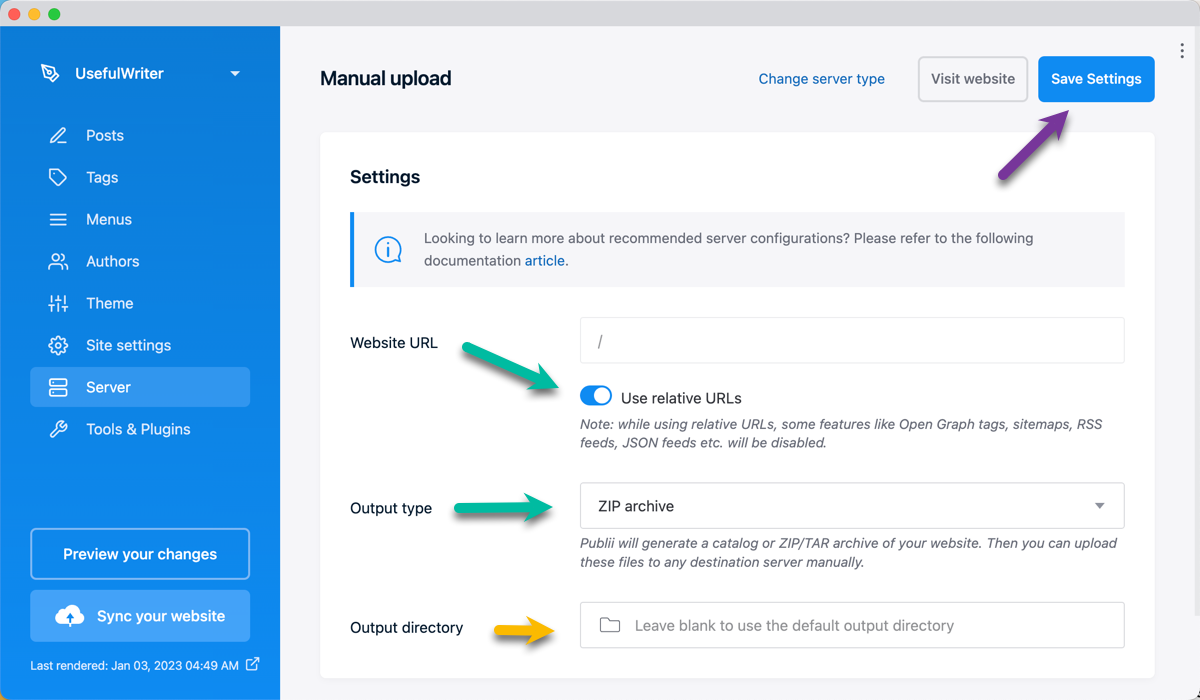
To upload to a remote server, I suggest using relative URLs. Consult your webmaster for your specific requirements.
Under “Output type,” click to select from the dropdown list: ZIP archive.
Optionally you can change the default output directory. Publii uses your Documents directory and creates a new folder if one doesn’t exist.
Locate your ZIP file in the output directory and keep it handy.
Visit Tiiny.host to post your website in three simple steps
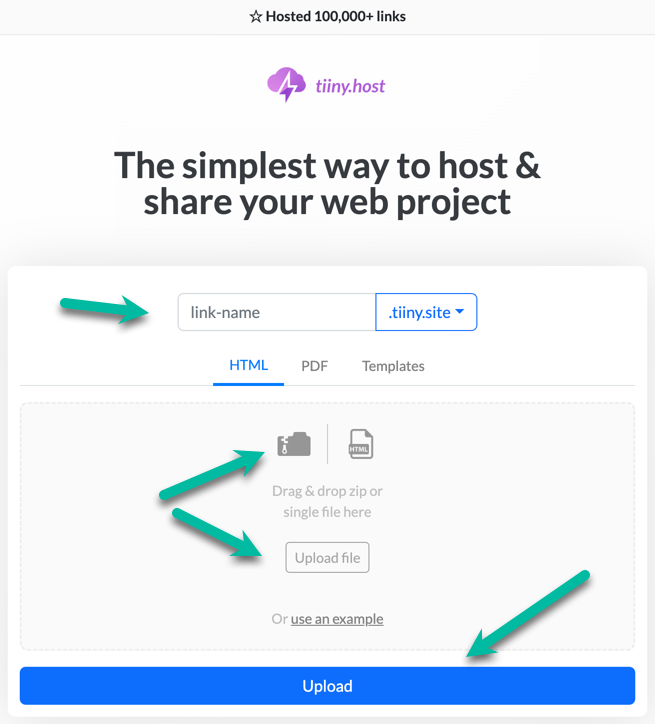
This is the Tiiny.host homepage. In three simple steps, your Publii website will be live on the web—free.
- Enter a link-name for your website.
- Drag & drop or use the button to upload your Publii ZIP file.
- Click the big, blue “Upload” button.
That’s it!
After a few moments, your website is available live on the web to share with others. Larger websites take longer to process than small websites, just so you know.
How do I get support for my Tiiny.host site?
Customer service at Tiiny.host is awesome. Contact them directly at tiiny.host/help. They can answer your questions and help with your upload, if you need any help.
If you need other services, such as a custom domain, password protection, or visitor analytics, check out Tiiny.host’s paid offerings. They’re inexpensive and just as easy to use.

